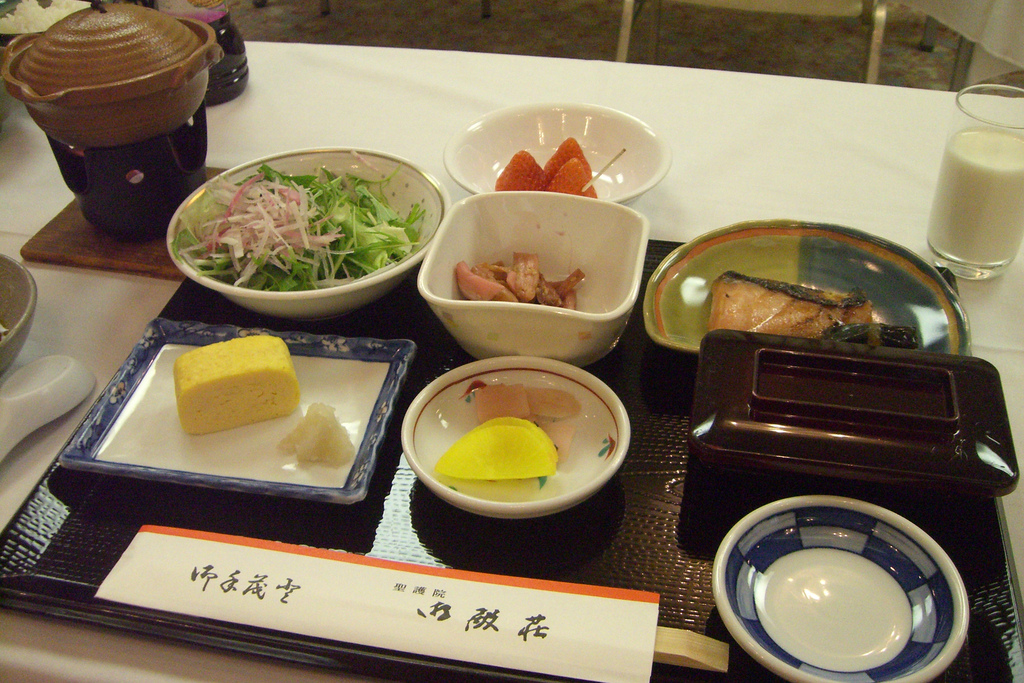
Traditional Japanese breakfast
In the morning I packed and left my things at the desk, then had a leisurely breakfast at the hotel buffet. The place was quite nice, but I was going to move in the evening to a new location, a temple that a friend had recommended that I stay in when I mentioned that I was interested in Buddhism. Since it looks like I will be coming to Japan regularly with work, I would like to try new things each time. I had originally planned on a small hotel near the station, but a temple sounded too interesting to pass up.
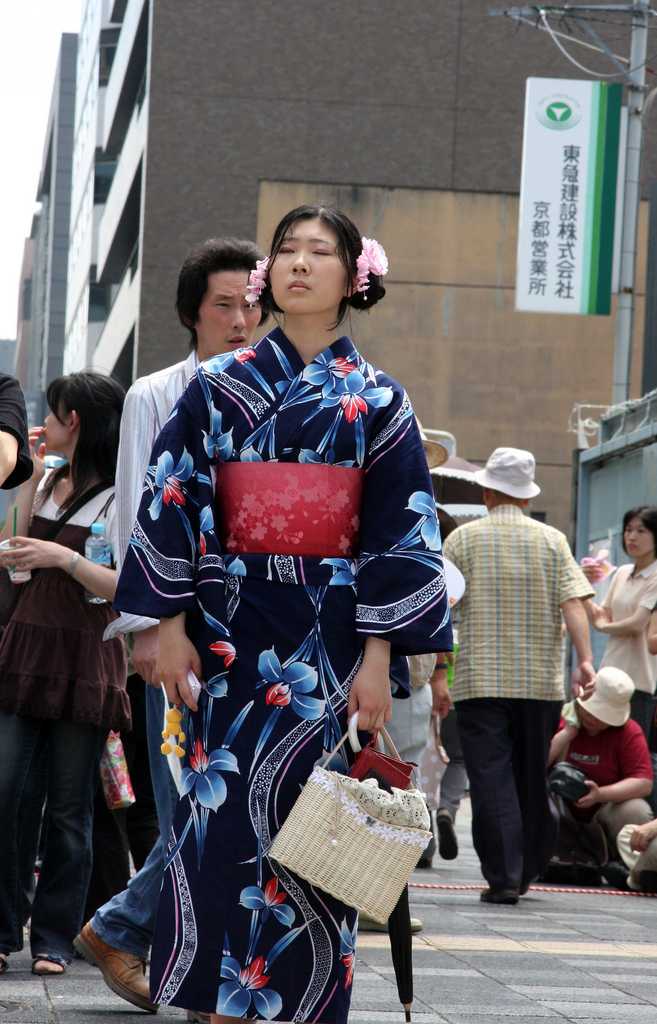
People-watching at the Gion Matsuri
But before going there, I had a free day in Kyoto. It is lucky that my business coincided with the Gion Matsuri, because today was the big parade. After breakfast, which ended up being an odd assortment of miso, rice, toast, salmon, and yogurt, I took the elevator down to the station.
The crowds were even denser than the evening before, if possible. I was glad to get outside and walk to the parade route. There was no way to find seating near the corner where the floats had to turn, but I got a decent enough position about halfway along. It was fun to watch the people while waiting for the parade, and I tried to guess what countries they came from. It seemed like there was a cross-section from around the world.
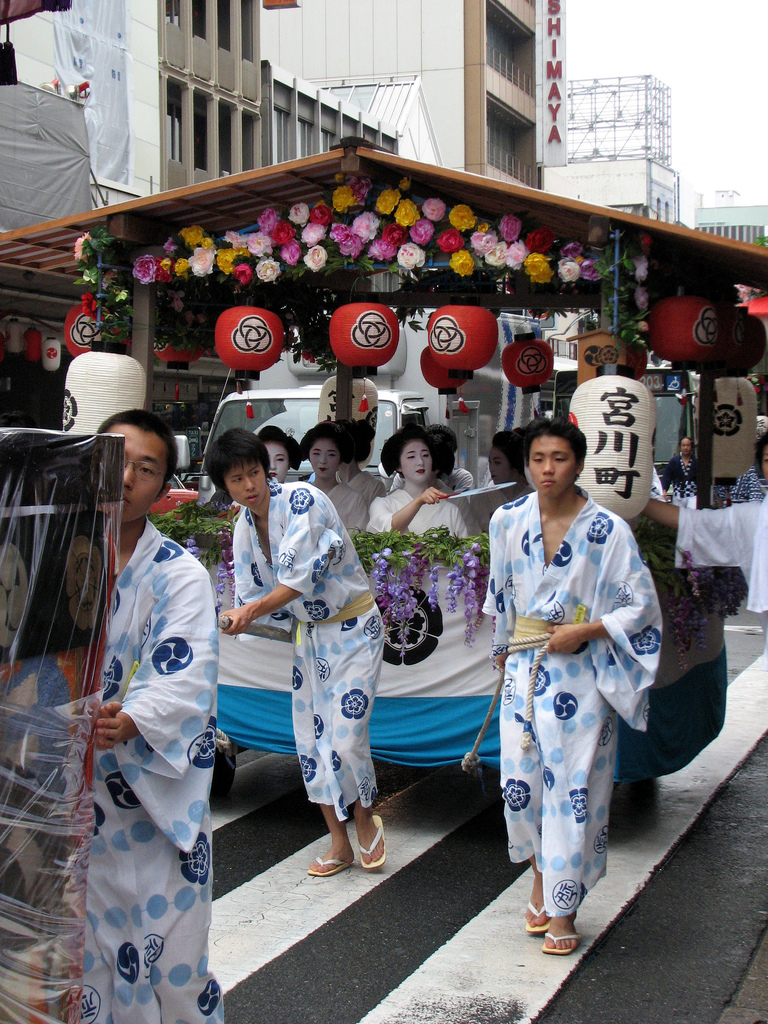
Shijo procession
Before the first float came into view, we could hear the music and chanting. It was similar to last night, but wilder and more intense. The crowd roared in excitement, and the bearers pulling the floats reacted by chanting louder and moving with more vigor, even though they were dripping with sweat. I can’t imagine how they kept up the pace for several hours along the whole parade route. It was easy to see why there were attendants carrying Pocari Sweat and other drinks.
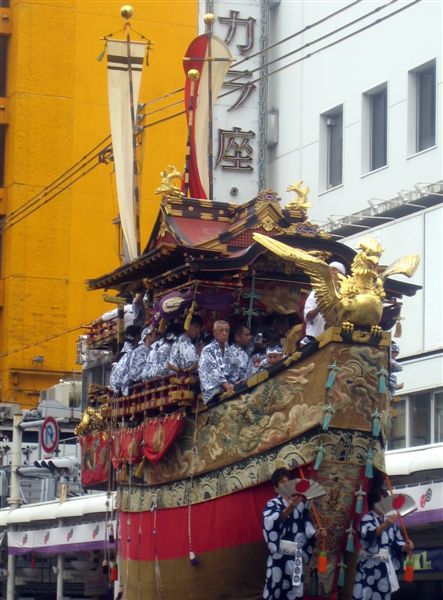
English: “Gion Matsuri” parade, Japan. Français : Parade ” Gion Matsuri ” au Japon. (Photo credit: Wikipedia)
Even though I had seen the floats the day before, they looked different swaying along the street, full of children playing music, and men standing on the sides shouting orders and I marveled that they could ride without falling off! The silk gleamed in the sunshine and the metal sparkled.

Gion Matsuri parade – “Fune Boko”
The floats were spaced quite far apart, but the action between was also interesting to see. More of the haunting, cacophonous music and people in traditional costumes filled the intervals so I was not bored.
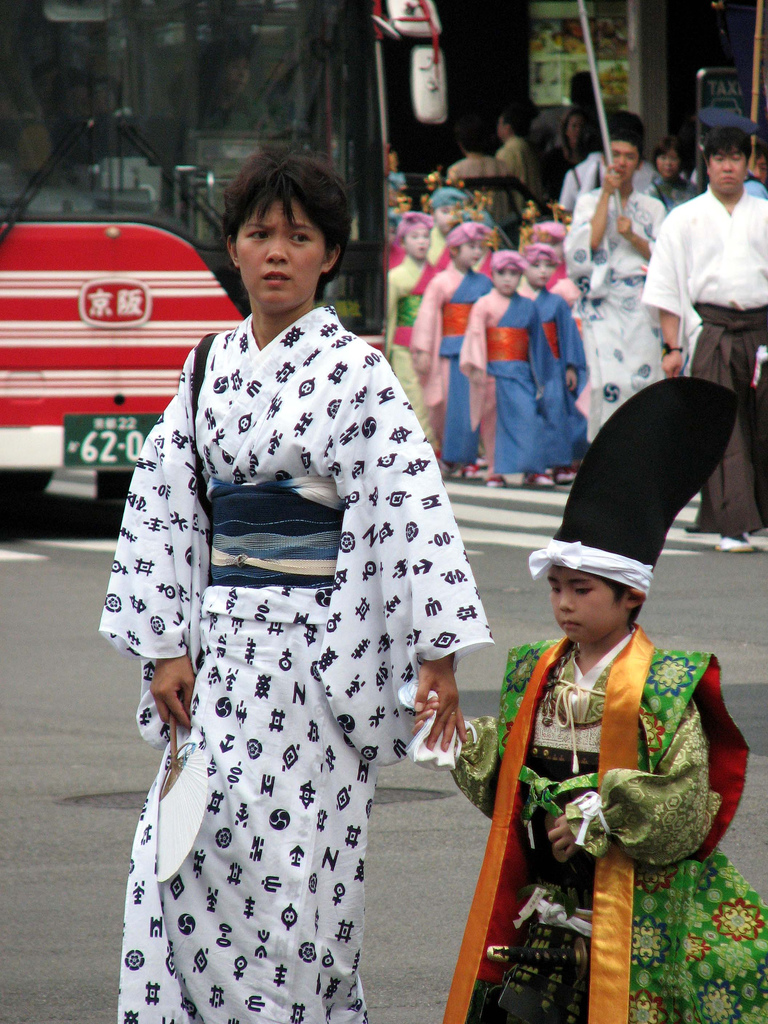
Little nobleman
I was quite hungry by the time the parade had passed, but I thought I would lose my place if I moved in search of food. Therefore, my next priority was to get a meal, and I again settled on the yatai, or temporary stalls. I had a few tako-yaki’s for a appetizer as they are so good. Then my stomach drew me to chose okonomiyaki, which was an eggy batter grilled on a giant hot plate. It was stuffed with cabbage and bacon and slathered with a dark sauce and mayonnaise. It was steaming hot and I almost scalded my mouth but it was delicious once I blew on it a bit! I think it would have been easier to eat with a fork than chopsticks however!
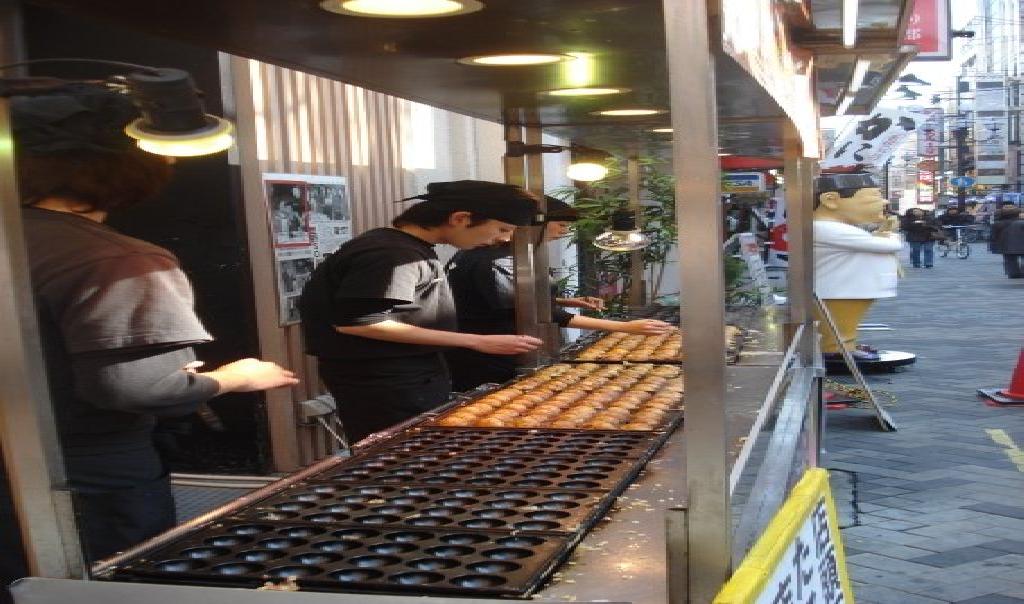
Tako Yaki (Octopus Balls)
After eating, I walked to Yasaka Jinja in the heart of Gion. I had decided to go there because the whole Gion Matsuri originated from this shrine, when a priest led a procession through the streets to try to stop the plague devastating the city in the 9th century. In retrospect, this might not have been the best idea because it was so crowded that it was hard to move.
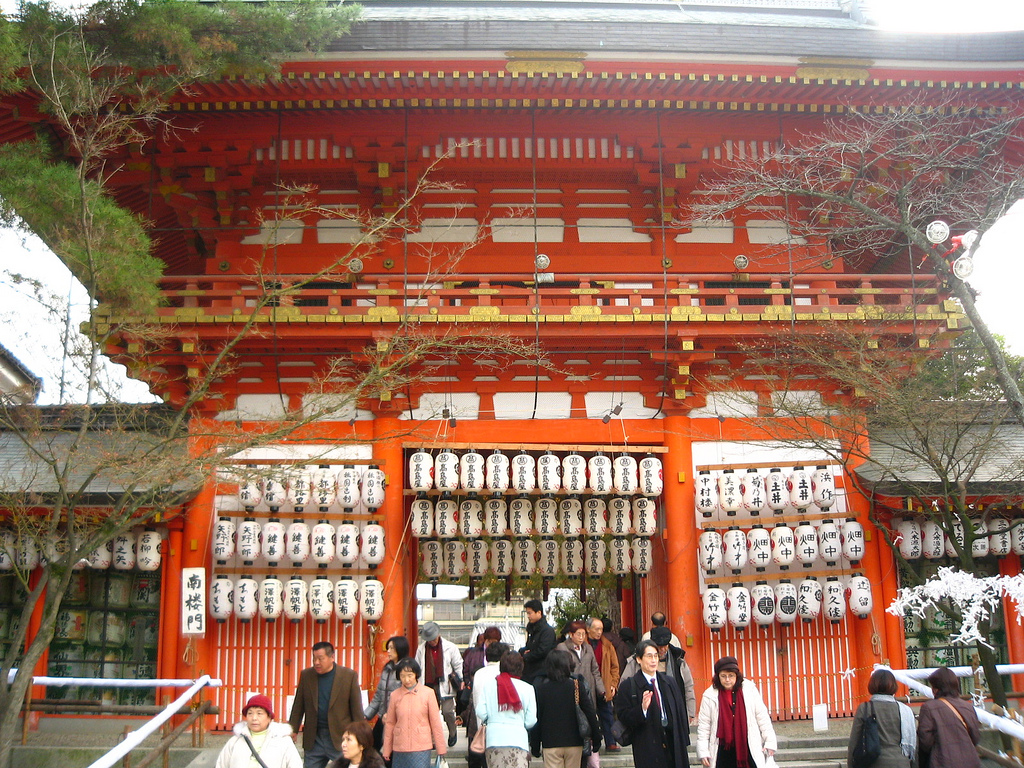
Yasaka-jinja Entrance
The shrine seemed a lot less like a place of worship than a carnival. There were shallow steps leading up to an immense white and red gate. Inside the gate, there were various buildings, including a stage with traditional dances, and small shrines dedicated to other gods. The architecture was interesting, and I especially liked the paper lanterns bedecking the central stage. However, it was hard to get close and enjoy them. There were tourists taking photos, vendors hawking everything from food to plastic masks, and even some fortunetellers. I am glad that I went, because the atmosphere was exciting, but I will have to go back some day when it is less packed, and maybe I can get some good photographs.
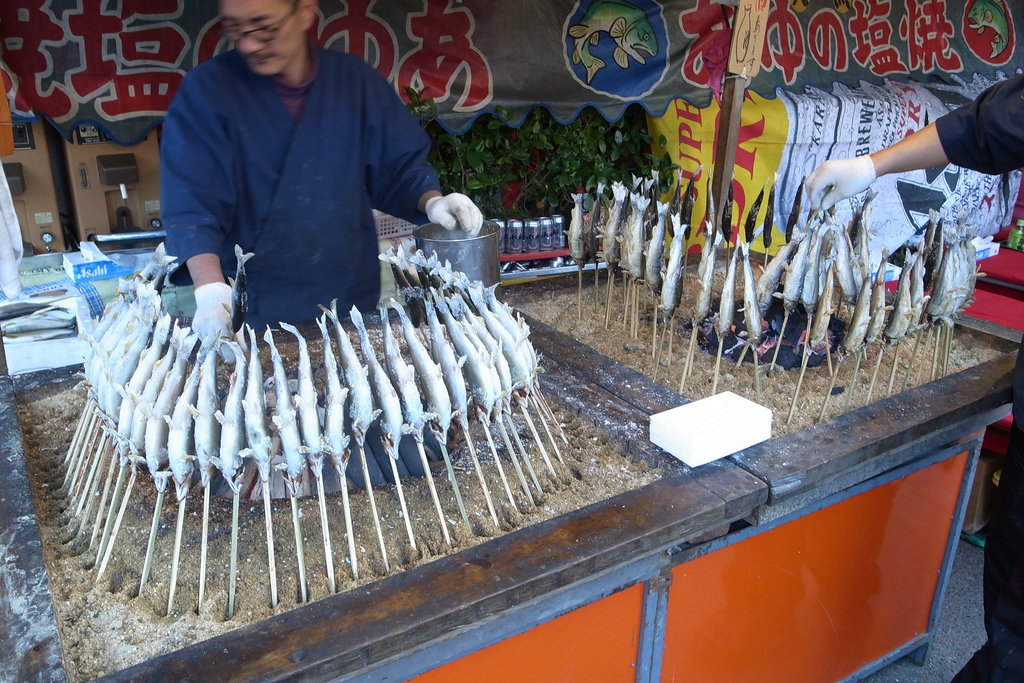
Food stand; Roasted fish (Ayu)
I had more time than I expected, so decided to stroll to Heian Jingu. I heard that it was lovely, and I was guessing that it would be less crowded than the places closer to Yasaka Jinja and the parade route. It was a long walk, but I took it slow and stopped for an iced coffee along the way.
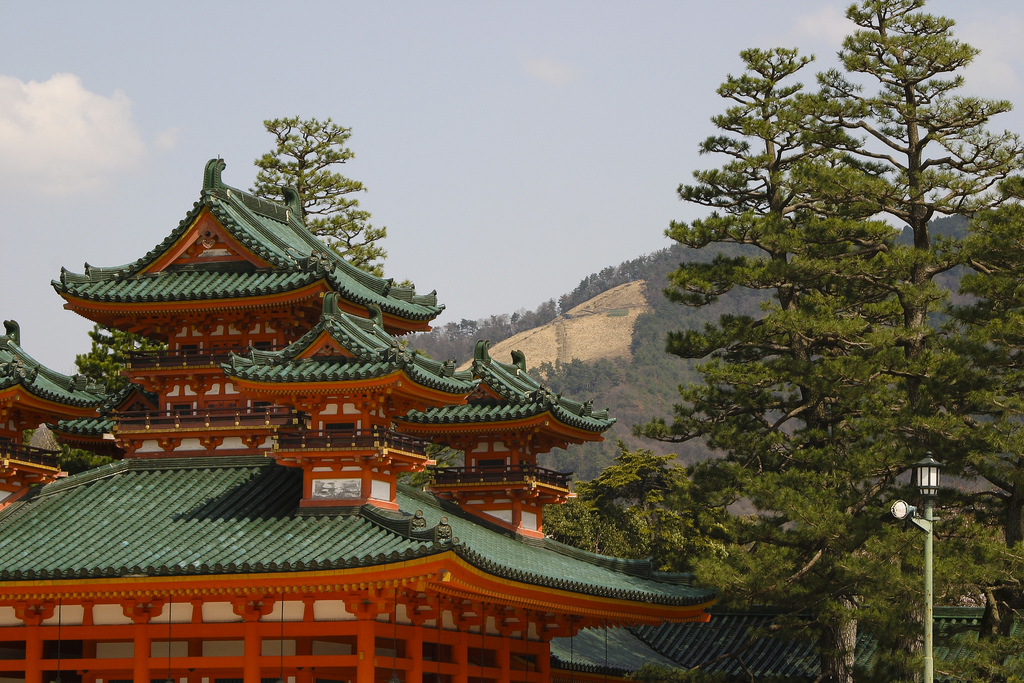
Heian Jingu
Heian Jingu was indeed much less crowded. The garden was lush and green, a peaceful oasis buzzing with insects and filled with beautiful plants. It was more my image of what Japan should be like, I guess. Again, it did not seem like a place for worship, though there were people praying at the main building. Instead, it seemed like going to a beautiful garden where I could roam freely at my leisure. The best part was a covered bridge over a pond which had big fish and turtles lazily swimming in it. They seemed to be relaxing on the hot summer afternoon, and I took their cue and sat on a bench and drank in the scenery.
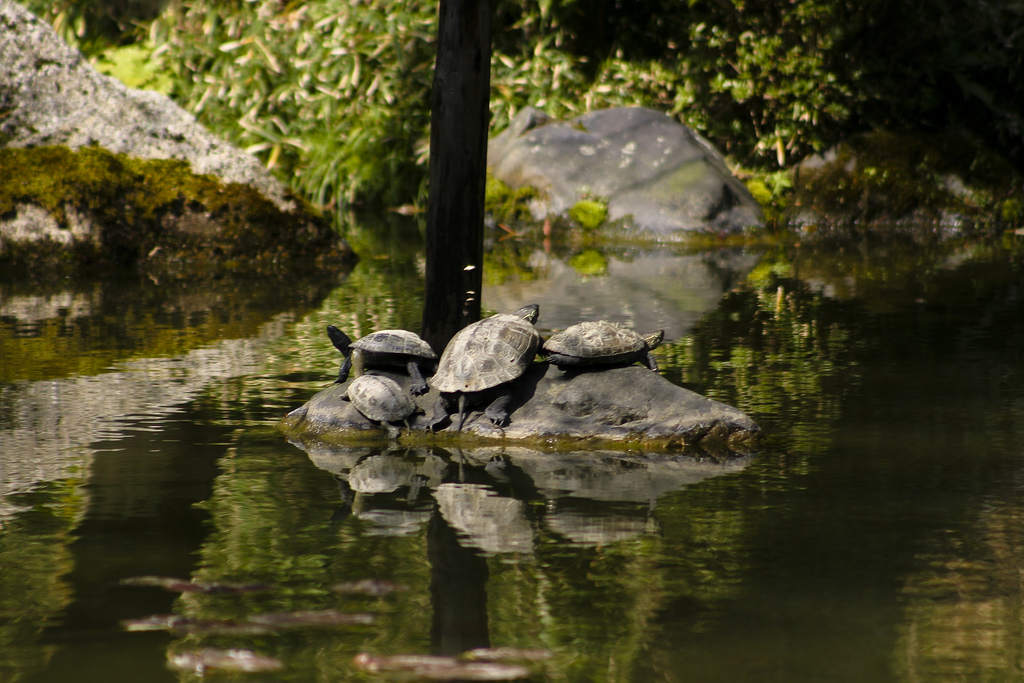
Heian Jingu
Tired from all the walking, I finally roused myself and caught the bus back to Kyoto Station. I had a hearty meal in Porta, the underground mall in front of the station, before collecting my belongings and saying goodbye to the staff at the Kintetsu Station Hotel.
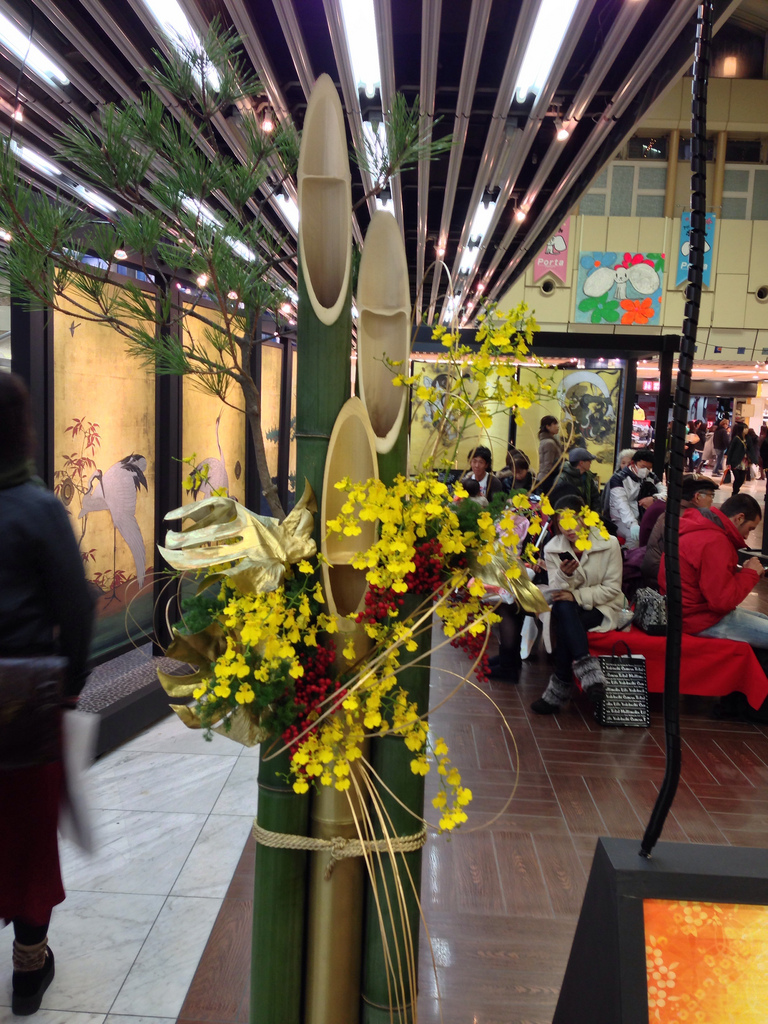
Kadomatsu at Kyoto Porta
After that, I found the bus to Myoren-ji. I had wanted to try something a little more off the beaten track, but I was really wondering if I had made a mistake, since the temple was out of the way in a very quiet and unremarkable neighborhood much farther from the station than I had expected. Unlike all the other public transportation I had taken this week, this bus had no other foreigners on it. But a friendly local chatted with me on the way there, and pointed out the stop and the direction of the temple.
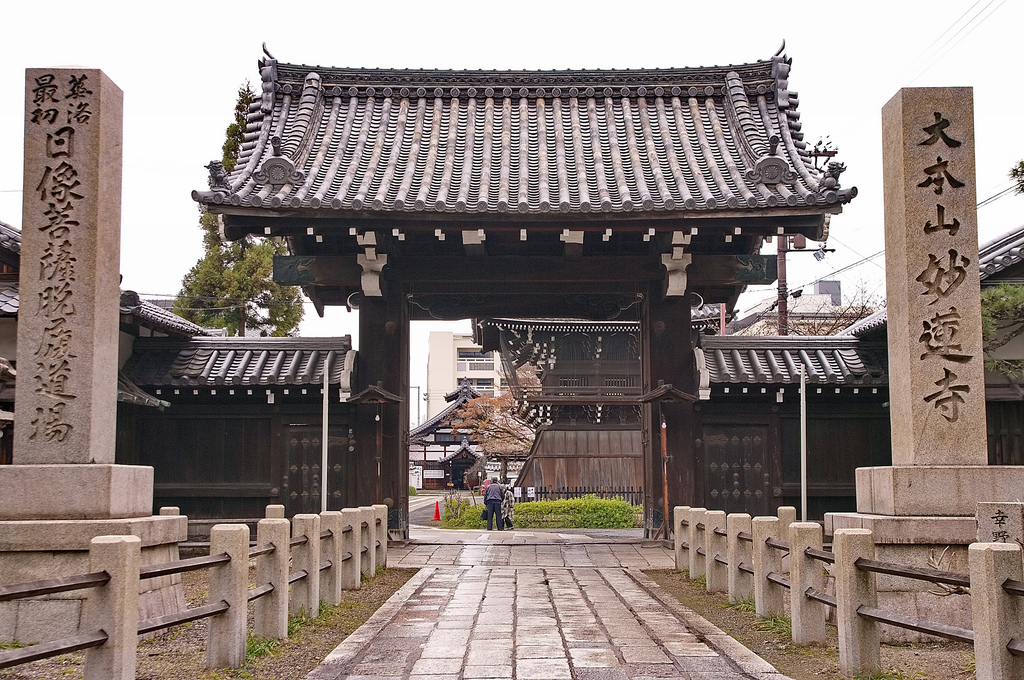
妙蓮寺 Myoren-ji Temple in Kyoto
The Myoren-ji temple had a heavy, imposing gate. I wandered through the grounds to the back, where a traditional old building stood. I stepped into the stone entry hall and was unsure what to do, so called, “Hello?” a few times. Soon a jolly, round woman appeared, wiping her hands on a towel. She immediately recognized who I was and took me through a maze of hallways, past some gardens, and up some stairs to my room. There was no lock, but it was surprisingly spacious and I was relieved to find it had air conditioning. She then showed me the toilet and sink area, and repeated again and again that there was no shower and that I should go to a public bath soon, before it got any later.
So I settled my things and took my shaving kit to the main hall, where she was waiting with a plastic bucket and a ticket to the bath. She also had a map, and with that, I found my way down several streets to an unobtrusive white building with a blue cloth hanging at the door.
Behind the cloth was a set of lockers for shoes, and a door for men and a door for women. I entered and found a bored old man smoking a cigarette and watching TV. He took my ticket without comment and waved me in to the men’s changing area. It was all dark, water-stained wood and humid, feeling almost like a sauna. After removing my clothes and putting them in another locker with my passport and other valuables, I entered the bath area.
Several older men stopped talking and stared. I smiled, nodded, and carefully showered, mentally thanking my friend for telling me what to do. After completely cleaning myself, I tried out the tubs. There were several different ones: one that was almost scalding hot water, plain cold water, a Jacuzzi, and one filled with yellow liquid that smelled of sandalwood. I tried each, my muscles relaxing after walking all day. The men resumed their conversations and ignored me after the initial novelty of my presence wore off.
At last, I left the bath house and walked back to the temple. It was so exotic to find myself staying in a paper-screened room like the setting of an old samurai movie. It was so quiet after the celebrations of the Gion Matsuri festival, though I still had echoes of the music and chanting filling my head. The futon was hard, but not uncomfortable, beckoning me to sleep.
 photos by:
Social Geek &
MShades,
MShades,
Stéfan,
MShades,
Chrissy Olson,
Matt Perreault,
GinkgoTelegraph,
beggs,
beggs,
kimubert,
Kyoto-Picture
photos by:
Social Geek &
MShades,
MShades,
Stéfan,
MShades,
Chrissy Olson,
Matt Perreault,
GinkgoTelegraph,
beggs,
beggs,
kimubert,
Kyoto-Picture